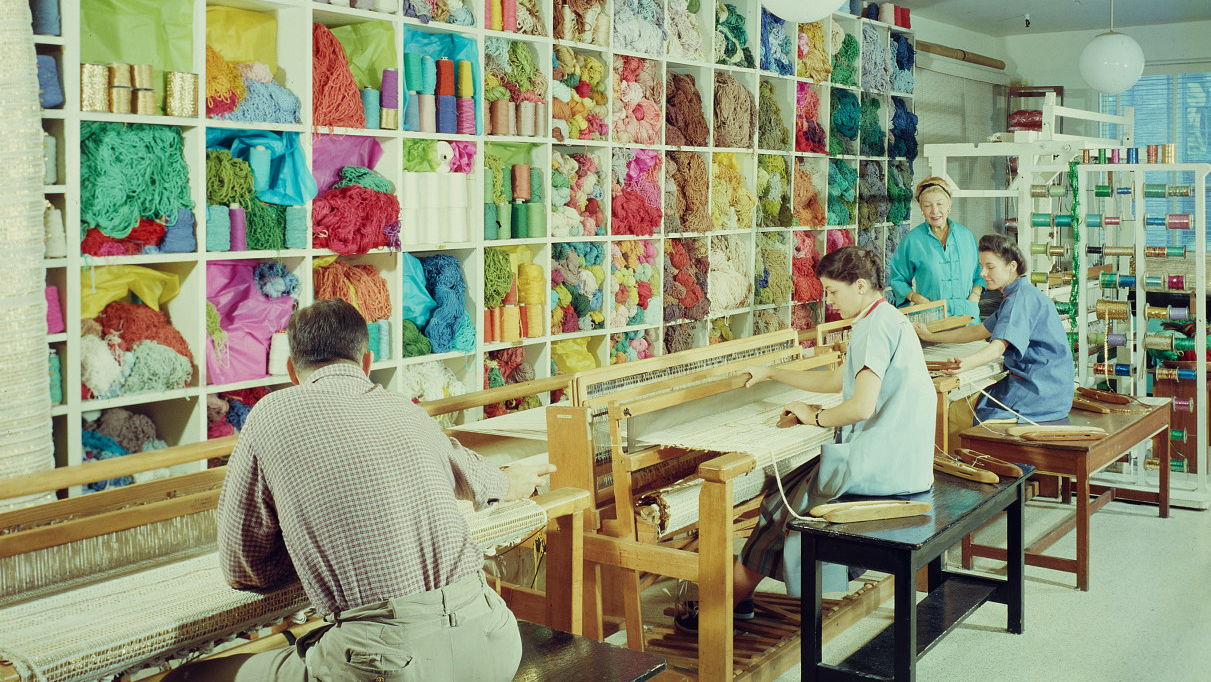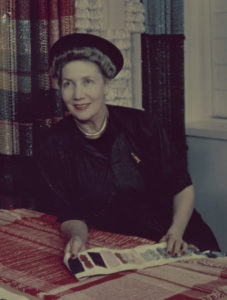Dorothy Liebes



Dorothy Wright (American, 1897–1972) was born in Santa Rosa, California, and studied applied design at the University of California Berkeley, graduating cum laude in 1923. During the course of her studies, one of her professors encouraged her to explore weaving, so in the summer of 1920 she learned how to weave at Hull House in Chicago, Illinois. She married Leon Liebes, the A. H. Liebes Department Store heir, in 1928.
After working abroad in Paris, France, Liebes returned to the United States and opened her eponymous studio in San Francisco. California. Her business initially focused on handwoven work for architectural clients including Frank Lloyd Wright. Liebes continued to travel, and in 1936 she spent a few months in Guatemala, exposing her to pre-Columbian textiles; she was particularly influenced by their bright color combinations and motifs.
At the end of World War II, synthetic materials that were created for and utilized in the war effort were made available for domestic use. Liebes was excited and inspired by these possibilities, especially the innovative ways in which they could be worked and manipulated. Liebes is often credited as a vital part of the California Modernist movement, and in the 1940s and ‘50s she was one of the most well-known textile designers in the United States. In contrast to the neutral palette of many of her modernist contemporaries, Liebes is well known for her unexpected use of materials, vibrant color, and pattern.
Liebes was a sharp businesswoman who believed that mass-produced textiles could reach wider audiences. While still retaining a handwoven appearance, Liebes worked to design power-loomed fabric in a myriad of different styles and materials. In 1957, Liebes left California and moved her studio to New York City, where she continued to work until her death in 1972. Her work can be found in private and public collections throughout the country, including the Museum of Art and Design, The Metropolitan Museum of Art, and Cooper Hewitt.